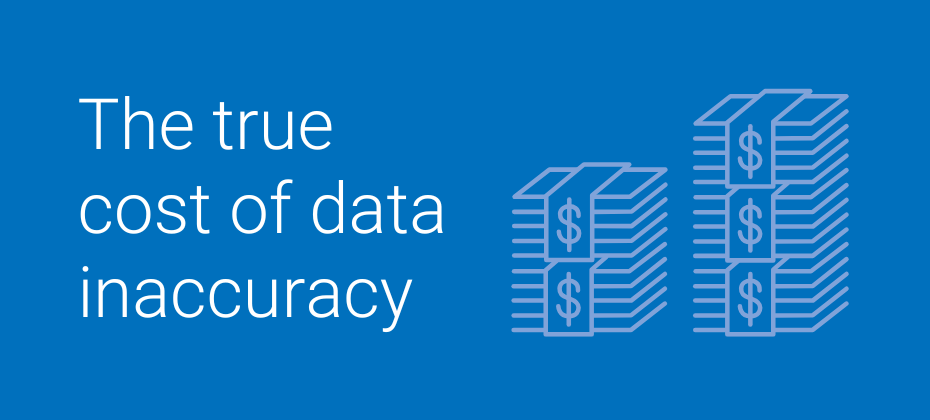All posts by Jeremy Meade, VP, Marketing Data Product & Operations

Originally appeared in MarketingProfs We all understand the importance of data quality. Metrics like third-party validations, match rates, and accuracy scores help us assess data quality on its own terms. Yet too often, organizations struggle to connect high-quality data with real-world business outcomes. How does data accuracy directly impact the ability to reach target audiences and campaign performance? Scale and cost: The tradeoffs of accuracy Marketers are frequently incentivized to prioritize broad reach, even at the expense of precision. This often leads to decisions driven by short-term gains—reaching more people at a lower cost. The temptation is deceptively straightforward, but deep down we know overly simplistic approaches are likely to fall short. Cheaper data solutions, even if they seem to provide greater reach, mask a deeper issue. The data may not be accurate. In fact, the initial savings from cheaper data typically result in higher long-term costs due to inefficiencies and waste that are hard to track. Unless you’re carefully evaluating your campaign results, it can be difficult to see where the inefficiencies are creeping in. The hidden cost of inaccurate data Programmatic platforms make it easy for mistargeted impressions to slip through unnoticed. Common issues include: Stale data, where consumer behaviors and locations have changed but the data hasn’t. Inactive signals, where you think a digital identifier like a device ID is addressable, but the device hasn’t been used in months. Disparate or duplicative data, where you think you’re reaching three people but in fact it’s just one person who you’re frequency bombing. Nobody likes getting the same ad over and over again. It’s like if your co-worker messaged you “hey” five times in a row. Direct mail waste is tangible: towering stacks of returned mail serve as undeniable reminders of inefficiency, not to mention the financial costs of wasted postage. Digital campaigns, by contrast, often obscure their inefficiencies within complex programmatic platforms or impression reports. It’s like watching a gust of wind scatter piles of paper into the ether—it's hard to track and quantify. As a result of these data inaccuracies, brands mistakenly assume they’re optimizing their budgets when, in fact, they’re hemorrhaging money and reaching the wrong people with a message they don’t care about. It’s a marketer’s nightmare scenario. The perceived savings from cheaper, less accurate data turn out to be an illusion. The compounding effect of inaccurate data Consider a situation where an inaccurate insight or signal prompts a brand to adjust its targeting toward an underperforming segment. Each new campaign uses this flawed data to guide its optimizations, amplifying the waste. What starts as a minor inefficiency quickly becomes a significant budget drain, funneling resources into segments that aren’t delivering. If you bake a cake but use salt instead of sugar–each new ingredient only makes the final product more unpalatable. With ad targeting, the feedback loop created by optimization tools exacerbates this issue. Decisions are made based on misleading metrics, perpetuating flawed strategies and causing brands to over-invest in underperforming tactics. Without scrutiny, brands risk building entire strategies on fundamentally flawed insights. The value of investing in the highest quality data With accurate data, brands can zero in on the right audience. This is particularly critical in lookalike modeling. By enriching customer files, brands can understand the nuances of who their best customers are—and how to find more of them. Tailored messaging, based on a consumer’s actual behaviors and interests, deepens engagement. Conversion rates rise as campaigns meet customer needs. Accurate data also provides insights that aren’t immediately obvious. Sometimes, seemingly minor behaviors or unexpected demographic segments can emerge as key drivers of conversions. It’s like finding the one avocado at the grocery store that’s perfectly ripe…you’re well on your way to delicious guacamole. To truly grasp the impact of data accuracy, traditional validation metrics such as third-party assessments (e.g. Truthset) should be paired with other performance indicators that show you how well data reflects actual consumer behavior. With this complete picture in view, the choice is obvious: quality data is worth the premium. Acting on what the data tells you Collecting accurate data is just the first step—the real challenge is having the ability to act on what it reveals. Many brands enter campaigns with preconceived notions about their target audience, only to find the data tells a different story. Ignoring these insights stifles growth. The value of data-driven marketing lies in trusting the insights and adapting strategies accordingly. How to test if your current approach is working We understand that changing data providers can feel daunting, but there are low-lift ways to explore whether your current approach is truly delivering. Test the waters by selecting an Experian Audience on a major platform or building a custom audience to see how your campaigns perform. Alternatively, collaborate with Experian’s insights team to gain a deeper understanding of your audience and determine if it aligns with your current strategy. It’s a small step that could lead to a big impact. Get in touch with our team today Latest posts
